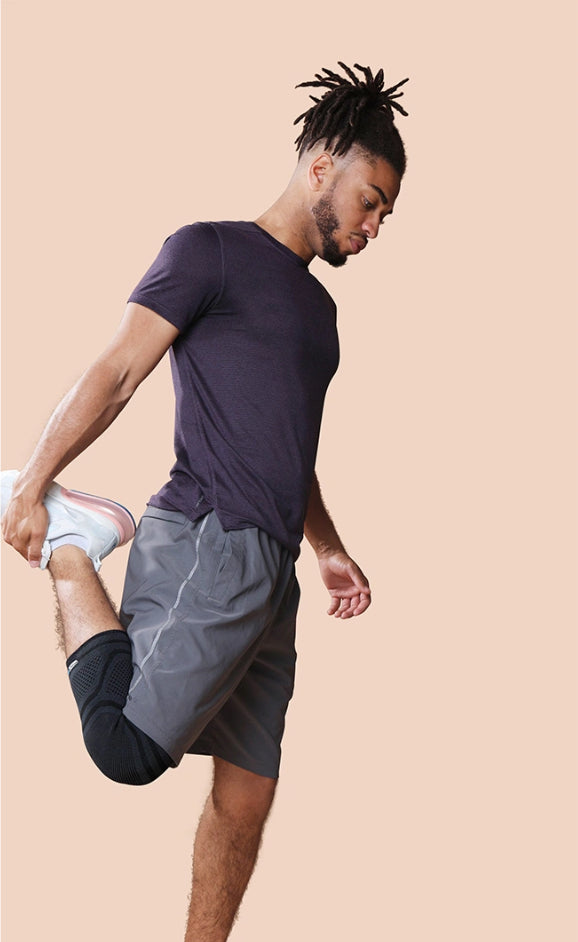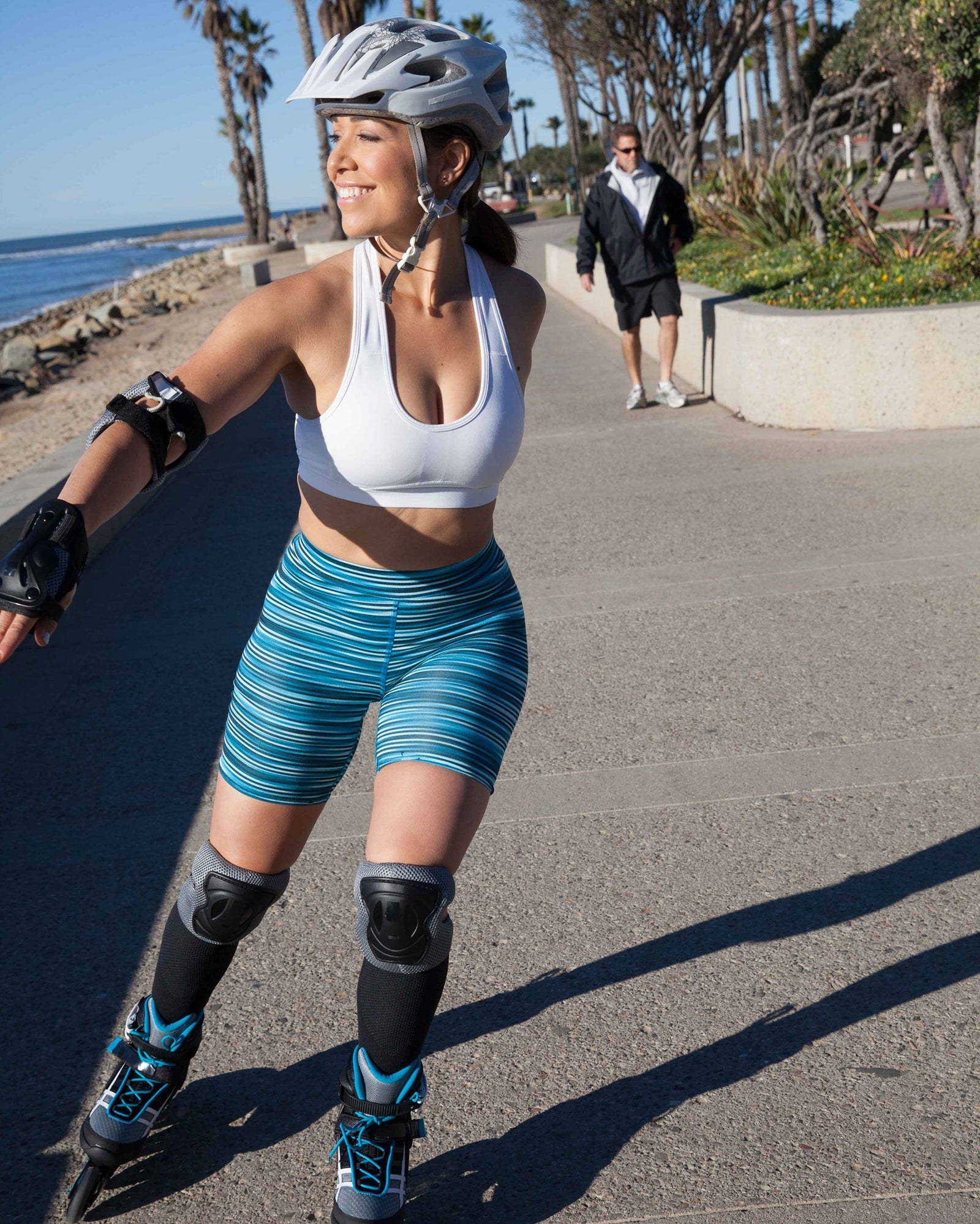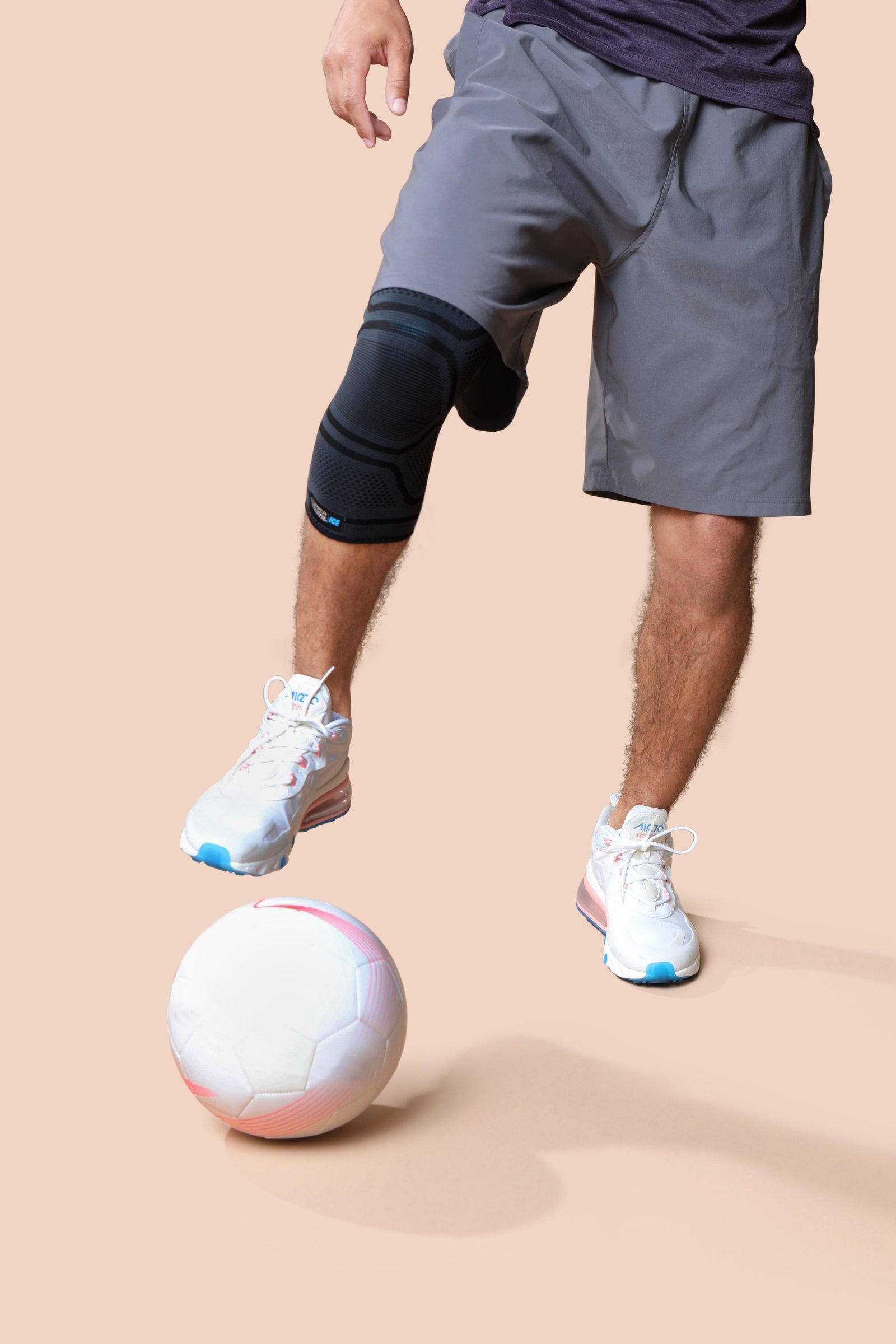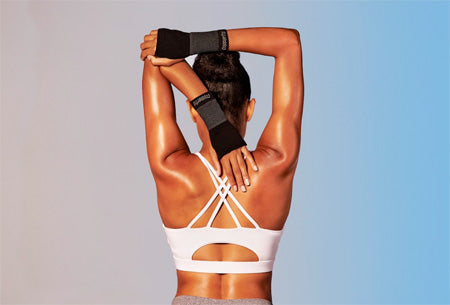
Running is more than just a form of exercise—it's a passion, a test of endurance, and, for many, a way to push personal boundaries. If you're a seasoned marathoner or a beginner on the running scene, the goal to run faster and beat your personal best is a common thread that binds all runners. At Copper Fit, we understand this drive.
Let’s get into a comprehensive guide on how to improve your running speed and beat your personal best with the support of Copper Fit products.
What Are the Basics of Running?
Before we get into the strategies for improving running speed, it's crucial to understand the basics of running. Running is a complex physical activity that involves the whole body. It's not just about the legs, either. Your core, arms, and even your posture play significant roles.
Proper Form
The biomechanics of running involve a series of coordinated movements. Your legs provide the driving force, propelling you forward with each stride.
Your core muscles maintain your stability, ensuring your body moves efficiently. Your arms counterbalance the motion of your legs, contributing to your rhythm and balance. Your posture impacts your running form, affecting how effectively you can harness your energy to move forward.
Proper form is essential for efficient running. It reduces the risk of injury and makes sure that you're making the most out of each stride. Key elements of a good running form include a slight forward lean, relaxed shoulders, a straight and stable core, and a foot strike that's directly beneath your body.
Understanding these basics provides a foundation for improving your running speed. It allows you to identify areas for improvement and make informed decisions about your training. Keep in mind every step you take is a step toward progress. With the right knowledge, training, and tools, you can make things a little bit easier and a lot more rewarding.
What Influences Running Speed?
The ability to run faster and maintain a higher speed over time is influenced by a variety of factors. Understanding these can help you develop a more effective and targeted strategy to improve your performance.
Fitness
Firstly, your physical fitness plays a pivotal role. This includes your cardiovascular health, muscular strength, and flexibility.
A robust cardiovascular system allows you to run longer distances without fatigue, while strong muscles, particularly in your lower body and core, can increase your stride length and power, enabling you to cover more ground with each step. Moreover, flexibility is crucial, as it allows for a full range of motion in your joints, which can lead to a more fluid and efficient running form.
Technique
Secondly, your technique or running form is a significant determinant of your running speed. Efficient running mechanics can help you move faster without expending unnecessary energy.
This includes elements like maintaining a good posture, optimizing your foot strike, coordinating your arm swing, and even controlling your breathing. All these factors work together to create a running form that propels you forward efficiently and reduces the risk of injury.
Training
Lastly, your training regimen is a critical factor in your running speed. Regular and varied training can gradually improve your stamina, strength, and speed.
Incorporating different types of workouts, such as interval training, endurance runs, hill sprints, and strength training, can yield the best results. Each type of training targets different aspects of your running performance, helping you become a well-rounded runner.
Other Factors
In addition to these, other factors like your nutrition, hydration, and even psychological state can influence your running speed. Proper nutrition fuels your body for your runs, hydration prevents muscle cramps and fatigue, and a positive mindset can propel you forward when the going gets tough.
By understanding these factors, you can develop a comprehensive plan to improve your running speed, making your goal of beating your personal best a reality.
How Do I Improve My Running Speed?
Now that you understand the factors that influence running speed, let's explore some strategies to improve it.
Interval Training
Interval Training involves alternating between high-intensity and low-intensity periods of exercise. This type of training can increase both your aerobic and anaerobic capacity, leading to improvements in speed and endurance.
An example of an interval workout might be running at a high intensity for one minute, followed by two minutes of lower-intensity running, repeated several times.
Strength Training
Strength Training is another key component of improving running speed. Stronger muscles can generate more force and power, leading to a faster stride. Exercises that target the core and lower body, such as squats, lunges, and planks, can be particularly beneficial for runners.
Flexibility and Mobility
Enhancing Flexibility and Mobility can also contribute to a more efficient running form and a lower risk of injury. Regular stretching and mobility exercises can help maintain a full range of motion in your joints. Copper Fit products can support this aspect of your training, providing comfort and support while promoting flexibility.
Nutrition and Hydration
Proper nutrition and hydration are also vital for optimal performance. A balanced diet can provide the energy you need for your runs while staying hydrated can help prevent fatigue and muscle cramps.
Improving running speed takes time and consistent effort. Be patient with yourself, and celebrate your progress along the way.
How Can Compression Gear Support My Running Performance?
As you embark on your mission to improve your running speed, compression gear can be your reliable partner. Compression wear is designed to provide support, enhance comfort, and aid recovery, all of which are crucial elements in achieving your running goals.
Our compression sleeves can offer targeted support to your muscles and joints during your runs. They can help maintain healthy blood flow, soothe muscle fatigue, and calm any discomfort. Plus, the incorporation of copper in our products helps reduce odor, keeping you fresh even during intense workouts.
You may be doing strength training exercises, working on your flexibility, or going out on a run—no matter what, Copper Fit products can support your performance and recovery time. They're not just accessories but essential tools that can help you reach your personal best.
Tips for Beating Your Personal Best
Achieving a new personal best is an exciting milestone for any runner. It's a tangible sign of progress, reflecting your hard work, dedication, and resilience. However, reaching this goal is not just about physical preparation—it also involves mental readiness, strategic planning, and a well-rounded approach to your training and recovery.
Here are some tips to guide you on your path to a new personal best:
- Setting Realistic Goals: Start by setting achievable targets. These should challenge you to improve, but they shouldn't be so ambitious that they cause undue stress or risk injury. Break down your main goal into smaller, short-term goals to make it more manageable and to provide motivation as you achieve each one.
- Consistency: Regular training is key to improving performance. Create a schedule that includes varied workouts and stick to it. Consistency helps build physical strength and endurance but also allows your body to adapt to the demands of running, gradually improving its efficiency and resilience.
- Rest and Recovery: Your body needs time to recover and adapt to the stress of training. Make sure to include rest days in your training schedule. During these days, focus on activities that promote recovery, such as light stretching, hydration, nutritious food, and good sleep. Copper Fit products can aid in this recovery process, providing support and comfort to your muscles and joints.
- Mental Preparation: Mental resilience is as important as physical strength in achieving a personal best. Practice positive self-talk and visualization techniques to prepare your mind for the challenge. Don’t forget that running is as much a mental game as it is a physical one. Cultivating a strong, positive mindset can give you an edge when you're pushing toward a new personal best.
- Listening to Your Body: While it's important to push yourself, it's equally important to listen to your body. If you feel pain or excessive fatigue, it may be a sign that you need to ease up or adjust your training. Ignoring these signals can lead to injuries that could set you back in your progress.
- Seeking Professional Advice: If you're new to running or have specific health concerns, it may be beneficial to consult a healthcare professional or a certified running coach. They can provide personalized advice and guide you in designing a training program that's safe and effective for you.
Beating your personal best is a marathon. Enjoy the process, celebrate your progress, and don't rush. With patience, consistency, and the right approach, you'll be crossing that new finish line in no time.
Crossing the Finish Line
Improving your running speed and beating your personal best is a rewarding goal that requires dedication, strategy, and the right support. With the tips provided in this article and the aid of Copper Fit products, you're well-equipped to take on this challenge.
Every runner's experience is different. Listen to your body, adjust your training as needed, and consult with a healthcare professional or trainer for personalized advice. At Copper Fit, we're here to support your comfort and recovery, empowering you to stay active and feel your best every day.
So, lace up those running shoes, set your sights on that personal best, and let's get running!
Sources:
Tips to Improve Your Running Form | Campus Recreation | Liberty University





